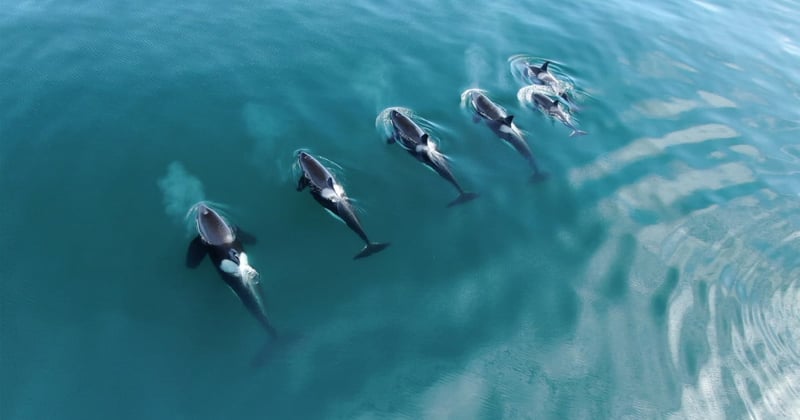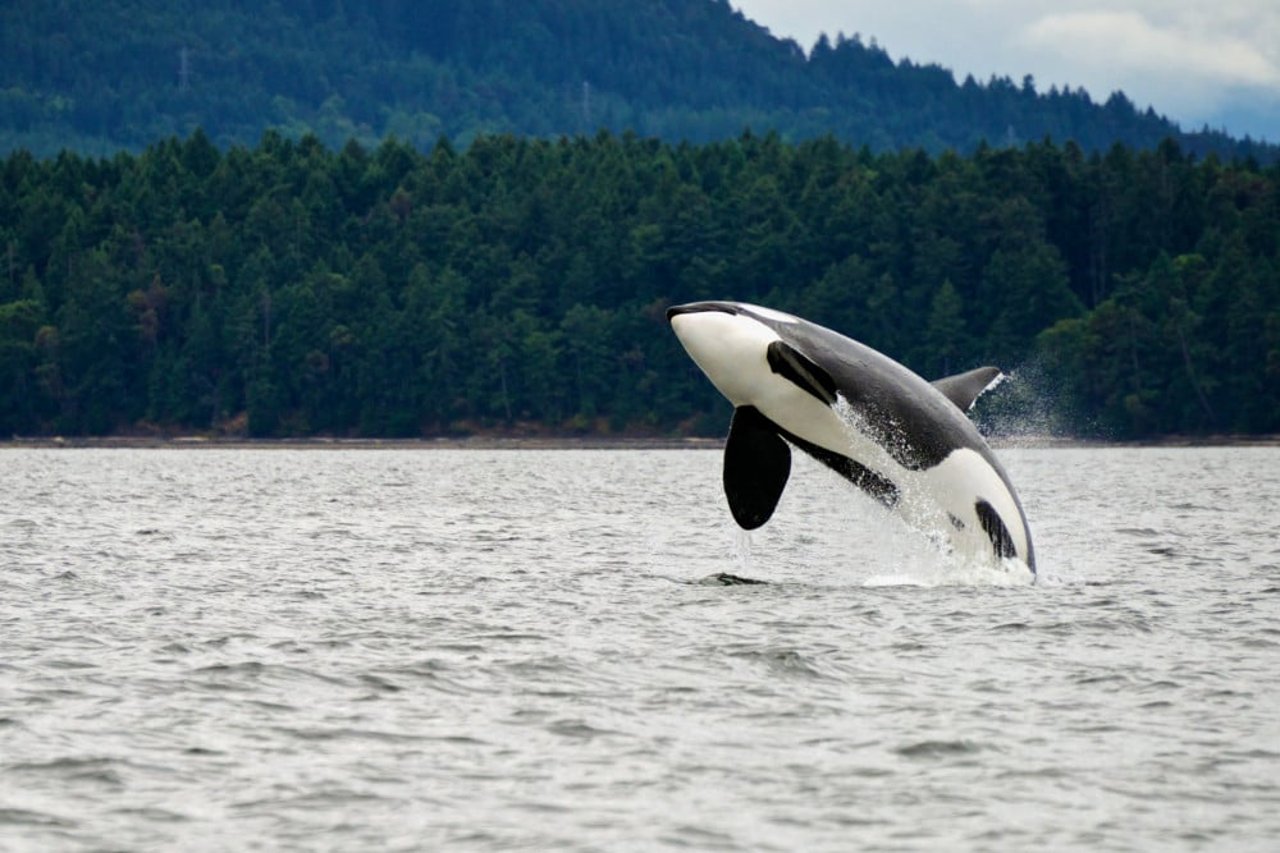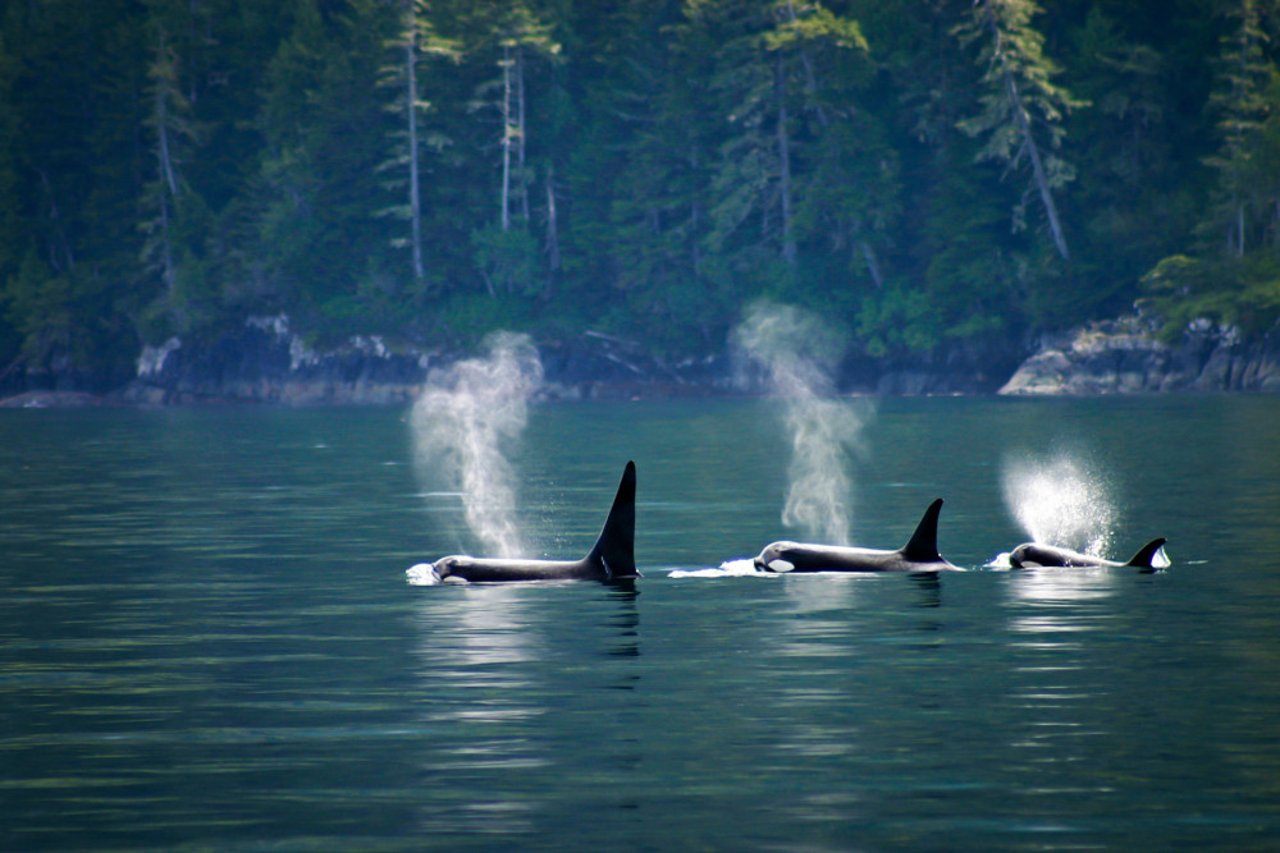
Orca (killer whale) facts
Blog
Also known as “Killer Whales”, orcas are actually the largest species of dolphin and not technically “whales”!
Orcas (Orcinus orca) are marine mammals who belong to the dolphin family (Delphinidae). They are the largest species of dolphins and are easily recognizable by their black-and-white coloration and white patches near each of their eyes. Orcas can weigh between 5,500 and 10,000 kg and reach lengths of 32-feet!
Why are orcas called "killer whales"?
It’s believed that when European fisherman and sailors encountered orcas hundreds of years ago, they witnessed orcas hunting whales. As a result, they named the species “whale killers”. When the name was translated into English, it became “killer whales”. Although known to hunt a variety of species, there have been no documented cases of orcas killing humans in the wild.
Are orcas dangerous?
While orcas are one of the fiercest predators in the ocean, they generally pose no threat to humans. Despite the “killer” whale name, there are no documented cases of an orca intentionally harming a human in the wild as previously noted. In captivity however, there are 4 recorded cases of orca-caused human deaths, three of them involved Tilikum, a wild-caught orca and the focus of the documentary Blackfish. Tilikum was captured when he was only 2 years old and spent most of his life captive at SeaWorld in Orlando, Florida, in a small, barren concrete tank. He was forced to perform over and over again until January 2017 when he died after 34 years in captivity.
Recently, there have been cases of orcas ramming and sinking boat. While this new behaviour is yet to be fully understood, some experts interpret it as a social and playful behaviour.
What was Blackfish about?
Blackfish, the documentary, told the story of Tilikum, a captive orca who killed three people including two of his trainers. The film also explained the controversies behind keeping orcas in captivity. Because of the film, SeaWorld announced it would end its orca-breeding program.
An orca breaching in the wild, where they belong. (Photo: Doptis/Shutterstock)
Where do killer whales live?
Orcas are the most widely distributed mammals, living in every ocean around the world.
Canada is home to several distinct populations of orcas, each characterized by their unique cultural differentiations, such as hunting and other behaviours, and the composition of their diet. Along the Pacific coast of Canada, live four of these populations – Southern Resident, Northern Resident, West Coast Transient, and Offshore. In the Arctic/Atlantic Ocean lives the Northwestern Atlantic and Eastern Arctic population.
What do orcas eat?
Orcas are the ocean’s apex predators, which means they are at the top of the food chain and have no natural predators. They eat a wide variety of prey, from marine mammals like seals, to fish, and even seabirds!
Depending on the orca community, each has their own specialized, traditional diet. For example, West Coast Transient orcas in the Salish Sea eat only marine mammals like seals and sea lions while the Southern Resident orcas (also found in the Salish Sea) eat only fish, especially the Chinook salmon.
Do orcas live in groups?
Yes, orcas live in close-knit multi-generational groups called “pods.” Orcas live in a matriarchal society, where older females pass down knowledge and specific behaviours to the younger members of their family.
A pod of orca whales off the coast of Vancouver Island, British Columbia. (Photo: Jeroen Mikkers/Shutterstock)
Are orcas endangered?
According to the IUCN, orcas are currently listed as “Data Deficient", which means their conservation status is unknown.
However, the Southern Resident Orcas (a population of orcas who live off the Canada/US Pacific coastline) are considered endangered under the Endangered Species Act. This is largely attributed to the decline of Chinook salmon in their habitat – which makes up 80% of their diet.
How long do killer whales live?
The life span of orcas differs between the sexes. Male killer whales have an average lifespan of approximately 30 years, although some individuals have been known to survive for 60-70 years in the wild. Females on the other hand, have a typical lifespan in the wild is around 50 years, but can live for 80-90 years! In contrast, captive orcas of either sex rarely live longer than 30 years, with many dying in their teens and 20s.
Sadly, right now, there are over 3,000 dolphins globally that are in the same situation day after day, month after month, year after year as Kiska was. Many are kept in poor conditions and used for shows in which they have to perform, none of them will ever get to experience the freedom of being able to swim amongst their pod in the vast ocean.
Help put an end to wildlife captivity
Your gift today can help stop their suffering by supporting the end of their captive breeding, wild capture, and use for entertainment for good. It can also ensure that the systematic cycle of cruelty for profit stops so that this is the last generation to be trapped in tanks.
Help us expose corporations that profit off the suffering of these beautiful animals and instead encourage, support, and promote alternatives like Whale Heritage Sites and sea sanctuaries.
Banner photo: Willyam Bradberry/Shutterstock

